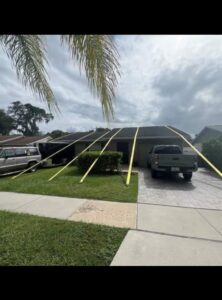
CNN’s Brian Abel spoke with a man originally from Puerto Rico who was seen strapping down his Orlando home.
Video: CNN
Hurricane Milton hurled rain, tornadoes and tropical storm-force winds at the U.S. coast Wednesday on the storm’s steady, potentially catastrophic march toward Florida, where officials issued a final plea to residents to evacuate or face grim odds of survival.
The National Hurricane Center stressed that it was not certain where Milton’s center would come ashore Wednesday night because the storm’s path might “wobble,” but the entire Tampa Bay region and points south were at grave risk. Tropical storm-force winds began lashing the coast Wednesday afternoon.
“This is it, folks,” said Cathie Perkins, emergency management director in Pinellas County, which sits on the peninsula that forms Tampa Bay. “Those of you who were punched during Hurricane Helene, this is going to be a knockout. You need to get out, and you need to get out now.”
Milton, which has fluctuated in intensity as it approaches Florida, was a Category 3 hurricane Wednesday afternoon. It was expected to remain a hurricane after hitting land and plowing across the state, including the heavily populated Orlando area, through Thursday.
Tampa Bay, near the top of a long stretch of coastline that could be in the bull’s-eye, has not taken a direct hit from a major hurricane in more than a century.
With the storm weaker but growing in size, the surge was projected to reach as high as 12 feet (3.6 meters) in Tampa Bay and up to 13 feet (4 meters) farther south, between Sarasota and Fort Myers.
Mary Ann Fairman, 84, was among roughly 1,000 people at a shelter in West Bradenton. She stayed home during Helene but packed up blankets, snacks and toiletries and left this time.
“The Gulf is practically in our backyard,” she said.
In Pasco County, home to over half a million people in bedroom communities for Tampa and St. Petersburg, officials said shortly before noon that they were getting ready to take buses off the road.